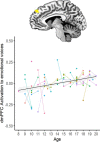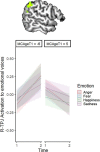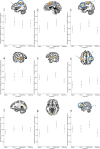Longitudinal change in neural response to vocal emotion in adolescence
- PMID: 35323933
- PMCID: PMC9527472
- DOI: 10.1093/scan/nsac021
Longitudinal change in neural response to vocal emotion in adolescence
Abstract
Adolescence is associated with maturation of function within neural networks supporting the processing of social information. Previous longitudinal studies have established developmental influences on youth's neural response to facial displays of emotion. Given the increasing recognition of the importance of non-facial cues to social communication, we build on existing work by examining longitudinal change in neural response to vocal expressions of emotion in 8- to 19-year-old youth. Participants completed a vocal emotion recognition task at two timepoints (1 year apart) while undergoing functional magnetic resonance imaging. The right inferior frontal gyrus, right dorsal striatum and right precentral gyrus showed decreases in activation to emotional voices across timepoints, which may reflect focalization of response in these areas. Activation in the dorsomedial prefrontal cortex was positively associated with age but was stable across timepoints. In addition, the slope of change across visits varied as a function of participants' age in the right temporo-parietal junction (TPJ): this pattern of activation across timepoints and age may reflect ongoing specialization of function across childhood and adolescence. Decreased activation in the striatum and TPJ across timepoints was associated with better emotion recognition accuracy. Findings suggest that specialization of function in social cognitive networks may support the growth of vocal emotion recognition skills across adolescence.
Keywords: adolescence; development; emotion recognition; fMRI; social cognition; vocal emotion.
© The Author(s) 2022. Published by Oxford University Press.
Figures






References
-
- Banse R., Scherer K.R. (1996). Acoustic profiles in vocal emotion expression. Journal of Personality and Social Psychology, 70(3), 614–36. - PubMed

